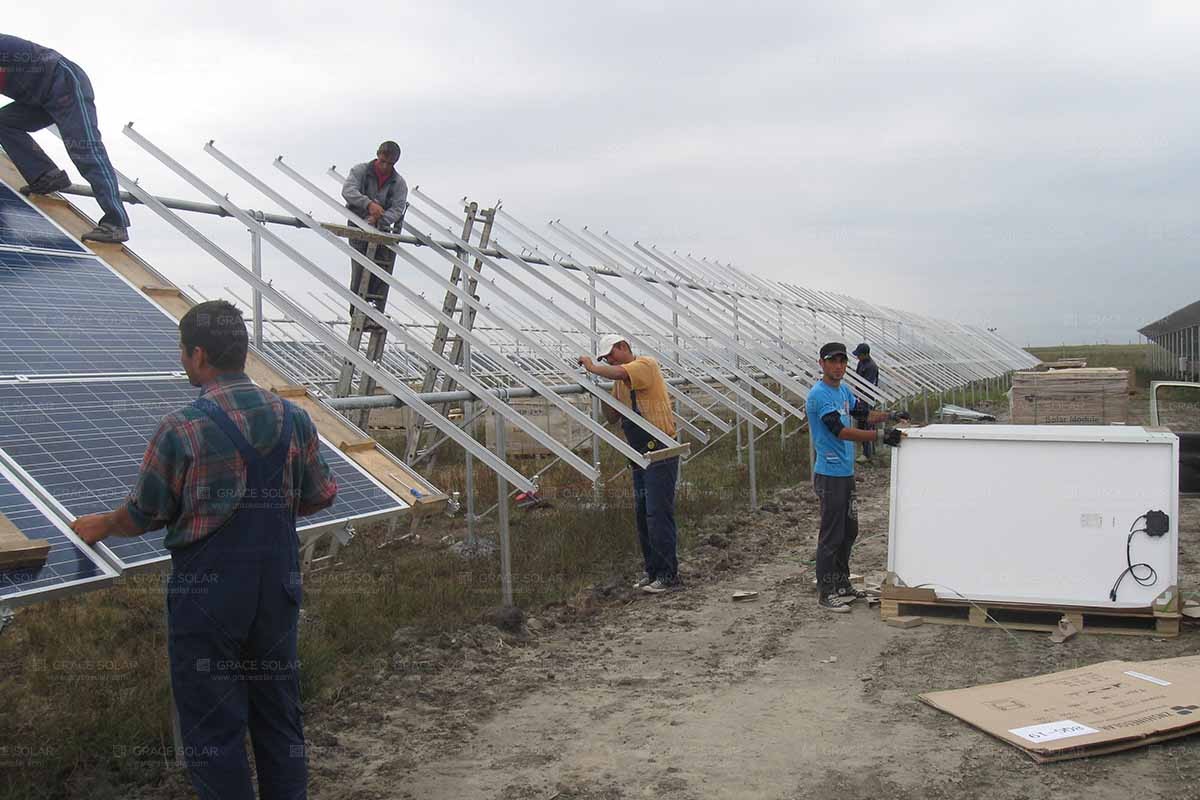Impact of floating photovoltaics on thermal characteristics of lakes
A new study details how floating photovoltaics impact wind flow and irradiance on lakes, with the effect of influencing water temperature at different depths. However, the report’s authors say more research is needed on how to design systems for maximum benefit to the water bodies themselves.
 A group of researchers from Fraunhofer Institute for Solar Energy Systems ISE and the University of Freiburg assessed a floating photovoltaics (FPV) system on Lake Maiwald in south-west Germany to determine its impact on the thermal characteristics of lakes.
A group of researchers from Fraunhofer Institute for Solar Energy Systems ISE and the University of Freiburg assessed a floating photovoltaics (FPV) system on Lake Maiwald in south-west Germany to determine its impact on the thermal characteristics of lakes.
In their study of a 749 kW FPV system on the lake, the researchers investigated the impact of the system on near-surface lateral wind flow, irradiance, water temperature, and energy balance using extensive meteorological and hydrological measurements.
The group found that the uppermost water layers show large water temperature differences (ΔTw) variability depending on the time of day.
“In particular, negative ΔTw values can be observed in the near-surface layer indicating a cooling effect of the system. The depth and standard deviation of mean water temperature differences show a strong negative correlation (r = −0.87). The fluctuations of the water temperature differences are significantly higher in the depth range of 0 to 5 m than in the depth range of 5 to 10 m (p = 0.0007).”
Researchers say the findings could indicate that the effect of FPV is mainly reflected in the upper water layers, as well as that different effects can be expected during the day and night, with the strongest cooling occurring in the near-surface water layer.
To determine the effects of the FPV on the lake, the team used the General Lake Model, inputting data from measurements of global horizontal irradiance (GHI) above and below the modules. Additionally, the team used data generated by small wind transmitters to analyze differences in near-surface lateral wind speed due to the system.
“Based on the sensitivity analysis of the wind reduction, it can be observed that the impact of FPV on the near-surface wind speed can have a considerable effect on the thermal properties of the lake,” the study notes. “While the measured reductions in irradiance (73%) and wind (23%) imply a counteracting effect to climate change, high wind reductions can have a stabilizing effect on the stratification and significantly increase the surface water temperatures in extreme years such as 2018. This, in turn, could further amplify the expected effects of climate change.”
The group says the above complexities mean that more research should be done to monitor the interaction between FPVs and water, so that systems can be specifically designed “to achieve beneficial effects for the water bodies with regard to climate change.”
In their study of a 749 kW FPV system on the lake, the researchers investigated the impact of the system on near-surface lateral wind flow, irradiance, water temperature, and energy balance using extensive meteorological and hydrological measurements.
The group found that the uppermost water layers show large water temperature differences (ΔTw) variability depending on the time of day.
“In particular, negative ΔTw values can be observed in the near-surface layer indicating a cooling effect of the system. The depth and standard deviation of mean water temperature differences show a strong negative correlation (r = −0.87). The fluctuations of the water temperature differences are significantly higher in the depth range of 0 to 5 m than in the depth range of 5 to 10 m (p = 0.0007).”
Researchers say the findings could indicate that the effect of FPV is mainly reflected in the upper water layers, as well as that different effects can be expected during the day and night, with the strongest cooling occurring in the near-surface water layer.
To determine the effects of the FPV on the lake, the team used the General Lake Model, inputting data from measurements of global horizontal irradiance (GHI) above and below the modules. Additionally, the team used data generated by small wind transmitters to analyze differences in near-surface lateral wind speed due to the system.
“Based on the sensitivity analysis of the wind reduction, it can be observed that the impact of FPV on the near-surface wind speed can have a considerable effect on the thermal properties of the lake,” the study notes. “While the measured reductions in irradiance (73%) and wind (23%) imply a counteracting effect to climate change, high wind reductions can have a stabilizing effect on the stratification and significantly increase the surface water temperatures in extreme years such as 2018. This, in turn, could further amplify the expected effects of climate change.”
The group says the above complexities mean that more research should be done to monitor the interaction between FPVs and water, so that systems can be specifically designed “to achieve beneficial effects for the water bodies with regard to climate change.”
Their findings are available in the report “The impact of floating photovoltaic power plants on lake water temperature and stratification,” published in scientific reports.



.jpg)